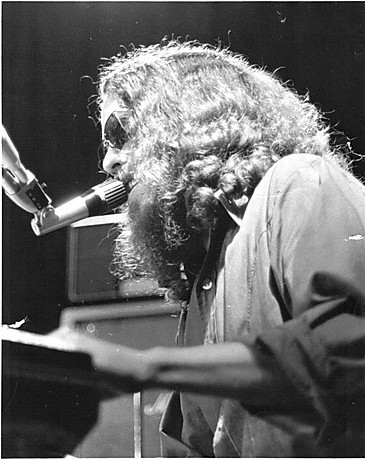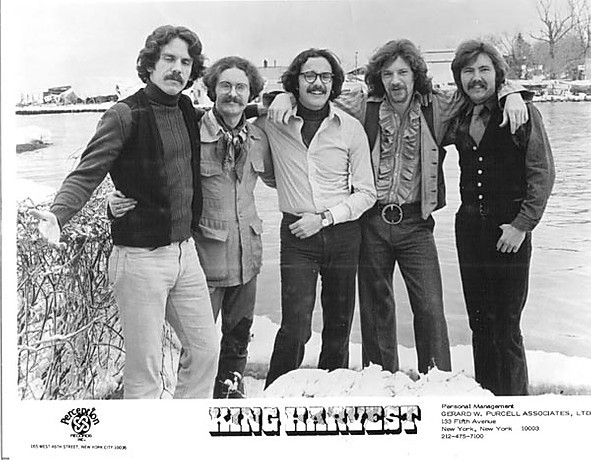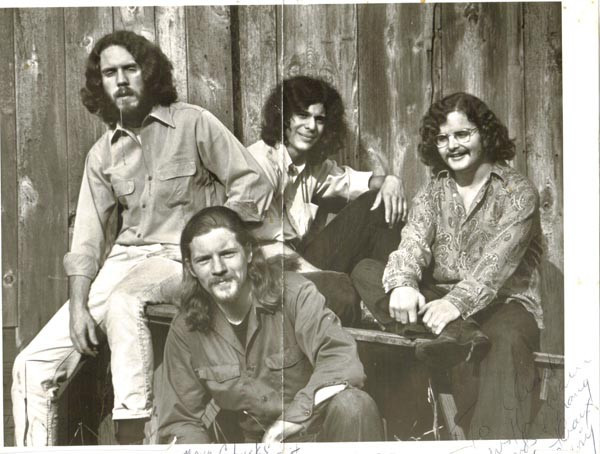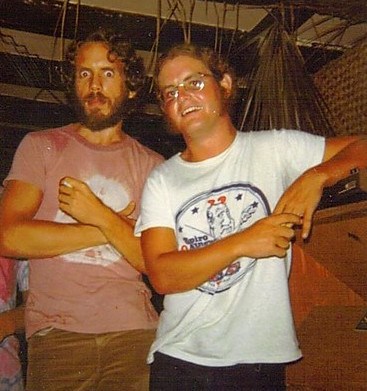The anticipation was palpable. This weekend was supposed to be a highlight, a much-awaited concert featuring a stellar lineup: Pure Prairie League, Poco, and Orleans. The excitement, however, was abruptly cut short by the COVID-19 pandemic. As May 2020 dawned, the prospect of live music events for the year remained uncertain.
In the weeks leading up to the canceled show, a deep dive into YouTube videos of these bands became a comforting substitute. Among them, Orleans’ rendition of the classic King Harvest song, “Dancing in the Moonlight,” stood out. This iconic track, penned by Sherman Kelly, has long held a special place as a favorite from the 1970s. Originally released on July 9, 1972, “Dancing in the Moonlight” resonated deeply with audiences, climbing to No. 10 on the Cash Box Top 100, No. 13 on the Billboard Hot 100, and No. 22 on the Billboard Easy Listening chart, solidifying its status as a feel-good anthem.
While often browsing comments on YouTube music videos, a particular comment caught my eye on an Orleans performance of “Dancing in the Moonlight.” It was from Sherman Kelly himself, posted just five months prior.
Sherman Kelly? The songwriter?
Driven by a passion for the stories behind beloved songs and albums – the very essence of The Vinyl Dialogues series – an idea sparked: Could I reach out to Sherman Kelly and ask him to share the fascinating story behind “Dancing in the Moonlight”?
The answer was a resounding yes, and the story behind this seemingly carefree “Dancing Moonlight Song” is far more profound and unexpected than you might imagine.
 Sherman Kelly performing live in the 1970s, during his time with Boffalongo, showcasing the early days of the 'Dancing in the Moonlight' songwriter.
Sherman Kelly performing live in the 1970s, during his time with Boffalongo, showcasing the early days of the 'Dancing in the Moonlight' songwriter.
From Caribbean Nightmare to Moonlight Dream: The Genesis of a Hit
In 1969, Sherman Kelly and friends were managing a nightclub in St. Thomas, Virgin Islands. Seeking a day of adventure, they chartered a 65-foot yacht to St. Croix. Unforeseen was Kelly’s susceptibility to seasickness, which he and his girlfriend experienced intensely during the voyage.
Upon reaching St. Croix, the group disembarked in search of dinner. However, Kelly and his girlfriend, still battling seasickness, had lost their appetite. As the others went ashore for food, Kelly and his girlfriend considered their lodging options. Looking back at the yacht swaying in the harbor, they decided against returning and sought accommodation in town for the night.
A critical oversight: in his seasick haze, Kelly had left his wallet on the yacht, leaving him without funds for a hotel. They approached a small inn, explained their predicament to the innkeeper, and proposed settling the bill in the morning upon retrieving his wallet.
“And he said, ‘Sure, you can stay here if your girlfriend will sleep with me,’” Kelly recounted in a telephone interview from his home in New York’s Finger Lakes region.
Rejected at a second inn as well, Kelly’s girlfriend offered a different solution: “It’s a beautiful night. Why don’t we just stretch out on the beach?”
“So we did,” Kelly said. “And that’s all I remember very clearly.”
The events that followed are a fragmented recollection of Kelly’s memory and accounts from others. While sleeping on the beach, Kelly and his girlfriend became victims of a brutal attack by a St. Croix street gang. Five gang members, wielding baseball bats, severely beat Kelly. His girlfriend was raped by the gang leader, with the others waiting their turn. However, in a moment of resilience, Kelly’s girlfriend later reported that he regained consciousness during the assault and fought back, creating enough disturbance to frighten off the attackers.
Adrift in and out of consciousness, the couple managed to follow the coastal lights, eventually reaching the only hospital on St. Croix. Unbeknownst to them at the time, Kelly and his girlfriend were likely among the first victims of the notorious Fountain Valley Gang. In 1972, this gang would perpetrate a mass murder of eight tourists and injure eight more, devastating St. Croix’s tourism industry for years.
“I woke up to the sound of my hospital roommate screaming in pain. Finally the screaming stopped and I heard two doctors talking about him. ‘That’s it, he’s gone,’ said one doctor about the other patient. ‘What about him, you think he’s gonna make it?’ And the other doctor said, ‘No, I doubt it.” I realized they were talking about me,” Kelly recalled, painting a stark picture of his brush with death.
Against the odds, Kelly survived. He spent several days recovering in the St. Croix hospital before returning to St. Thomas and recuperating at a friend’s home. Eventually, he was well enough to return to New York, where doctors at New York Hospital undertook the arduous task of re-breaking and resetting the bones in his face and treating his other injuries.
Back home in Ithaca, New York, still enduring pain and persistent headaches, Kelly was in no condition to perform with a band. Yet, his creative spirit remained undimmed, and songwriting became his outlet.
It was during this period of convalescence that the seeds of “Dancing in the Moonlight,” this seemingly lighthearted “dancing moonlight song,” were sown.
“I envisioned an alternate reality, the dream of a peaceful and joyous celebration of life. It was just me imagining a better world than the one I had just experienced in St. Croix,” Kelly explained.
From an unspeakably traumatic experience that nearly claimed his life emerged a song celebrating joy and peace – a testament to the resilience of the human spirit.
“It was amazing. People liked the song right from the start. I liked it, but I wouldn’t have predicted that it would become a big hit,” Kelly admitted.
 King Harvest band photo from 1972, the year 'Dancing in the Moonlight' became a hit, featuring the lineup that brought the song to mainstream success.
King Harvest band photo from 1972, the year 'Dancing in the Moonlight' became a hit, featuring the lineup that brought the song to mainstream success.
From Boffalongo to King Harvest: The Song’s Journey to the Charts
King Harvest wasn’t the first to record “Dancing in the Moonlight.” In 1970, Kelly joined Boffalongo, a band featuring his brother Wells Kelly, guitarist Larry Hoppen, bassist and keyboardist Dave “Doc” Robinson, and Peter Giansante. “Dancing in the Moonlight” appeared on Boffalongo’s 1970 album “Beyond Your Head,” with Sherman Kelly on lead vocals, Wells Kelly on drums, and Larry Hoppen on lead guitar. This initial version of the “dancing moonlight song,” while raw, captured the song’s inherent appeal.
Kelly candidly assesses his vocal performance on the Boffalongo recording as “horrible.”
“The first time I was in a recording studio for that version, we had these producers who thought it was a good idea to give me cocaine. That was probably the worst idea,” Kelly revealed. “I found myself in the vocal booth, where there were a lot of people distracting me. And the producers would give me more cocaine to keep me doing takes until my voice was so distorted and so weird.”
Despite the challenging recording circumstances, Boffalongo’s rendition of the “dancing moonlight song” gained regional popularity, becoming a local hit. Another group, High Broom, also recorded the song in 1970 and released it on Island Records, but it didn’t chart.
When Boffalongo disbanded, Wells Kelly joined King Harvest, a French-American group then based in Paris, whose lead singer was Doc Robinson, also formerly of Boffalongo. Wells Kelly introduced “Dancing in the Moonlight” to King Harvest, recognizing its potential for broader appeal.
King Harvest’s version of “Dancing in the Moonlight” featured Robinson on lead vocals and was released as a single with “Lady Come Home” as the B-side. This version, polished and radio-ready, resonated nationally.
Once “Dancing in the Moonlight” became a hit, King Harvest invited Sherman Kelly to tour with them in the summer of 1972. During live performances, Robinson handled lead vocals on the song, while Sherman Kelly provided harmonies, a testament to the collaborative spirit behind the song’s success.
“Doc had a pretty good voice, better than mine,” Kelly acknowledged. “I remember one critic said about me, ‘As a singer, Sherman Kelly is not too bad of a songwriter.’ That was amusing, and true.”
However, the rigors of touring with King Harvest were not for Kelly. His tenure with the band lasted only one tour.
“Imagine yourself in your twenties and you’ve written a hit song, you have some chart action and you’re traveling around. It was fun for a while,” he reflected. “But life on the road is ridiculous. I didn’t really care for it after awhile.”
Wells Kelly later left King Harvest and reconnected with John Hall. Wells Kelly, Hall, and Harvey Brooks had previously been in a band called Thunderfrog in the late 1960s. Together with Larry Hoppen from Boffalongo, Wells Kelly and Hall formed Orleans. Orleans, too, would record their own version of “Dancing in the Moonlight,” further cementing the song’s legacy. The current iteration of Orleans, still featuring Hall and Larry Hoppen’s brothers, Lance and Lane Hoppen, continues to include “Dancing in the Moonlight” in their setlists, keeping the “dancing moonlight song” alive for new generations. Larry Hoppen passed away in 2012, but his musical contributions endure.
 Boffalongo, Sherman Kelly's band circa 1970, which first recorded 'Dancing in the Moonlight', a regional hit before King Harvest's national success.
Boffalongo, Sherman Kelly's band circa 1970, which first recorded 'Dancing in the Moonlight', a regional hit before King Harvest's national success.
Beyond the Moonlight: Sherman Kelly’s Life After the Hit
Sherman Kelly’s journey extends far beyond the success of “Dancing in the Moonlight.” He graduated from Cornell University in 1967 with bachelor’s degrees in psychology and English. He pursued further studies at Alliance Francaise in Paris, the University of Lausanne in Switzerland, and the New School for Social Research in New York City, all before penning his iconic “dancing moonlight song”.
Following the tragic death of his brother Wells Kelly in 1984, Sherman Kelly found the music industry too painful and shifted his focus. He earned a master’s degree in social work and psychotherapy from Syracuse University in New York and dedicated many years to working as a psychotherapist until his retirement.
In 2008, Kelly returned to his musical roots, releasing an album titled “Burnin’ the Candle,” which included unfinished songs he and Wells Kelly had co-written, a poignant tribute to their shared musical past.
The enduring appeal of “Dancing in the Moonlight” continues to this day. In 2000, Toploader’s cover of the song became another hit, introducing the “dancing moonlight song” to a new wave of listeners. The song has also been featured in numerous films and television shows, further solidifying its place in popular culture. In 2017, “Dancing in the Moonlight” was even featured in the video game “Guardians of the Galaxy: The Telltale Signs” and serves as the opening theme for the second episode, proving its timeless quality across different media.
 Sherman Kelly and Larry Hoppen, pictured together, highlighting their musical connection before Hoppen co-founded Orleans, another band known for performing 'Dancing in the Moonlight'.
Sherman Kelly and Larry Hoppen, pictured together, highlighting their musical connection before Hoppen co-founded Orleans, another band known for performing 'Dancing in the Moonlight'.
A Song of Hope and Resilience
The story of “Dancing in the Moonlight” is a powerful reminder that beauty can emerge from darkness. From a horrific experience, Sherman Kelly crafted a song that embodies joy, peace, and an “alternate reality” of hope. This “dancing moonlight song” has not only become a beloved classic but also a testament to the power of music to transform personal trauma into universal themes of optimism and resilience. Its continued popularity is a reflection of its ability to uplift and inspire, inviting listeners to imagine “a better world” under the gentle glow of the dancing moonlight.
